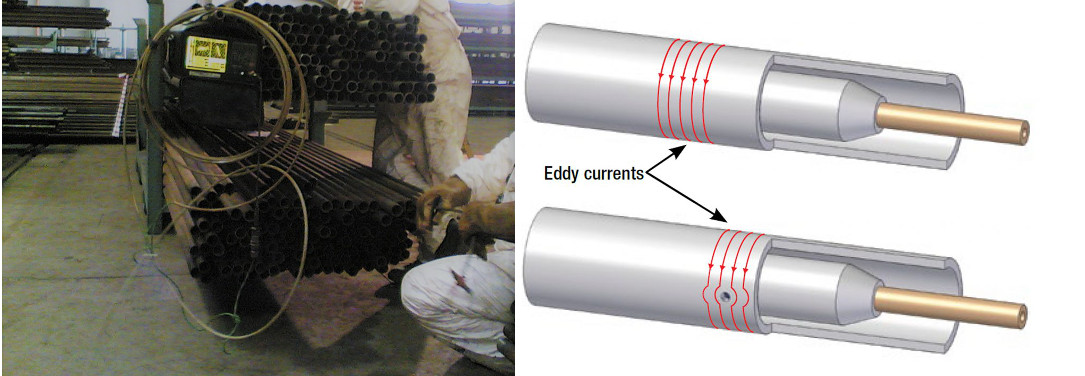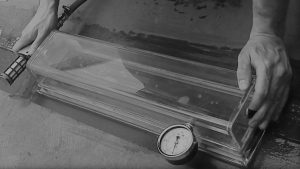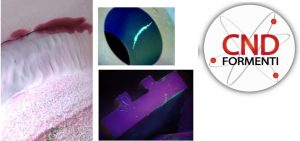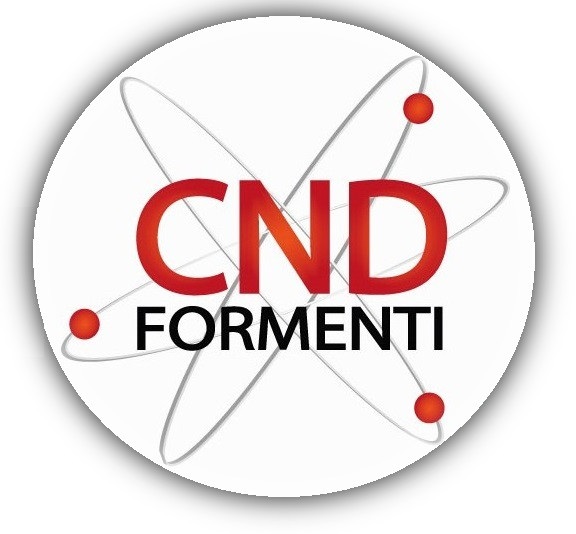Current induced
CND FORMENTI provides non-destructive testing with Induced Current or Eddy Current.
The method consists of the use of induced magnetic fields to detect and locate surface discontinuities in the material such as corrosion or cracks. Using an internal or external probe generates a magnetic field, the component under test is immersed in the aforementioned field, in turn the analyzed material generates a reaction to the field that is read by the probe, therefore any variation of impedance and such to create an imbalance inside the electrical circuit of the probe.

correnti indotte
The advantages of control through induced currents are the high surface sensitivity, the ability to find very small discontinuities and the possibility to perform the test on very low thicknesses.
The disadvantages of the system are the limited penetration of the material, since the extremely sensitive control requires uniform and dirt-free surfaces.
Vacuum box
The aim of the vacuum box technique in the bubble test is to highlight and allow the localization of leaks on components that can not be directly pressurized or evacuated, such as sheets and bottoms of open and various storage tanks, this is achieved applying a soapy solution on an area to be controlled and then creating a pressure differential between the vacuum box and the component.
Any loss leads to the formation of bubbles.

vacuum box
Ultrasonic
The ultrasonic control (UT ultrasound test) uses the propagation inside the solids of the elastic waves with a frequency higher than the humanly audible frequency, which sent to the component to be examined is attenuated by the matter that reflects them, deviates them or it absorbs due to the discontinuity in the material. Absorb them due to the discontinuity of the material or the edges and the walls of the examined component.
This volumetric method allows the identification, location and size of internal defects that cause reflection, deviation or absorption of an ultrasound beam away from the transducer from a few millimeters to several meters.
This ultrasonic method of non-destructive testing is generally applied to forged, forged castings, sadat products and thickness checks.
Data recording
CND FORMENTI on request of customers is able to prepare systems to acquire and record data in continuous mode for:
- PRESSURES
- PRESSURE FALLS
- MEASUREMENT AND VACUUM VARIATIONS
- TEMPERATURES
all the data acquired and recorded can be provided with graphic visualization and also saved in various formats such as Txt, CSV or Excel, formats that lend themselves to any processing.
Penetrant liquids
CND FORMENTI offers the exam service with penetrating liquids, which is a control belonging to the CND capable of identifying anomalies and discontinuities emerging from the surface, but not sub-suprficial discontinuities.

liquidi penetranti esempio
The PT method provides for the application of the penetrant (liquid at low surface tension and high capillarity) on the surfaces of the examination object, once the penetration phase of the liquid has been completed, the excess penetrant is washed and the drying step is carried out. The subsequent application of the detector allows the penetrating liquid to escape and the consequent detection of the indications.
Color contrasting PT – Observation is in white light.
Fluorescent PTs – The observation takes place in a dark area and irradiates the test surface with UV light, allowing a higher sensitivity of examination.
PT – For special uses.
Magnetoscopy
CND FORMENTI offers a service of magnetoscopy or magnetic control.
The MT method is a non-destructive control based on the attraction of ferromagnetic particles, it is used for the detection of superficial and subsurface anomalies and discontinuities in magnetic metals, in the proximity of a discontinuity there is a deviation towards the outside of the magnetic flux lines. which attract the particles forming an accumulation that allows their interpretation and evaluation.

magnetoscopia
